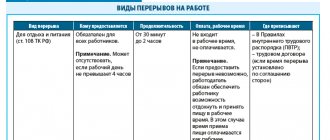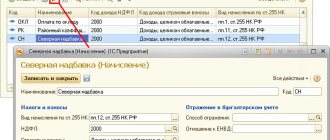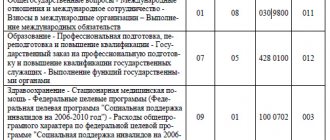Article 108 of the Labor Code of the Russian Federation: general comments
The requirements defined in Article 108 of the Labor Code of the Russian Federation arise from labor protection standards. In this case, legislators’ concern for employees is expressed in granting them the right to have lunch breaks during the performance of their work duties.
Formally, lunch breaks should be used for rest and eating. At the same time, no one is obligated to control exactly how an employee uses them. That is, breaks are allowed, and what the employee does during this time is at his discretion.
The procedure for providing breaks depends on the operating mode of the organization and the specifics of the labor functions performed by the employee.
Breaks under art. 108 of the Labor Code of the Russian Federation must be reflected in internal regulations relating to the labor regulations of the organization.
How long can a working day be?
The length of the working day may change due to the influence of a complex of factors that contribute to both the extension of working hours and its reduction.
The term “working day” is deciphered as the time during which an employee needs to perform the labor functions assigned to him while at the workplace.
Labor legislation does not provide a direct indication of the length of the working day. However, there are clear guidelines on the maximum duration of the working week and the possibility of using different work regimes.
IMPORTANT! When determining the length of the working day, the length of the work week is taken into account (no more than 40 hours - Article 91 of the Labor Code of the Russian Federation) and the applicable working hours (Article 100 of the Labor Code of the Russian Federation).
For example, a 5-day work week with 2 days off and a normal working day of 8 hours (40 hours/5 days) is considered standard.
At the same time, Art. 100 of the Labor Code of the Russian Federation defines the following types of labor regimes, in the application of which the duration of the working day differs from the generally accepted 8-hour:
- 6-day week with 1 day off;
- flexitime;
- part-time work week;
- other types.
In the generally accepted concept, a working day includes not only the immediate working time period when the employee performs his job duties, but also all rest breaks provided for by law or internal local regulations of the company. We will consider these elements of the working day (hereinafter referred to as WD) in the next section.
What are the specific requirements of the Labor Code of the Russian Federation for special operating modes?
There are operating modes when it is impossible to establish a single lunch break for everyone according to the Labor Code , for example:
- rotating shift schedule;
- irregular schedule;
- continuous nature of work (on a conveyor belt, in continuous cycle production).
In this case, the employer should provide employees with the opportunity to take breaks and eat during the work process. The procedure for providing such lunch breaks should be recorded in the organization’s internal regulations and/or agreements with employees.
Read more about internal regulations in the article “Internal Labor Regulations - Sample 2015”.
Establishment
The types, beginning, and duration of breaks are established by collective or labor agreements , as well as internal labor regulations ( ILR ).
An employment contract can stipulate a break if for a particular employee it differs from the general one in the organization: for example, it can stipulate the conditions for providing breaks to sales agents, merchandisers, and other employees with “field” working conditions who are unable to foresee how long it will take. negotiations or work with different clients.
What additional requirements apply to breaks during the working day?
The maximum and minimum time for a lunch break is established according to the Labor Code (Article 108) :
- at least 30 minutes;
- no more than 2 hours.
Other additional requirements for the duration of the lunch break according to the Labor Code have been preserved since the times of the former USSR. The provisions of Soviet documents still regulate such aspects as:
- the lunch break is set in such a way that the working day (shift) is divided approximately in half (resolution of the USSR State Committee for Labor and the Secretariat of the All-Union Central Council of Trade Unions dated May 30, 1985 No. 162/12-55);
- assigning a break no earlier than 4 hours after the start of work with standard working hours, but no regulation of the time interval from the start of work until the lunch break begins, with reduced standards and a flexible schedule (resolution of the USSR State Committee for Labor and the Secretariat of the All-Union Central Council of Trade Unions dated April 29. 1980 No. 111/8-51).
USSR documents regulating lunch breaks are applied to the extent that they do not contradict current legislation.
In certain industries (usually with special requirements for occupational health and safety), there are additional intra-industry provisions establishing the procedure and time for breaks in work.
Temporary norms enshrined in the Labor Code
A person's performance changes throughout the day. Its maximum level is observed from 9 to 20 o'clock, the minimum - from 2 to 4 o'clock in the morning. To avoid fatigue and maintain strength, employees need rest. For certain categories of employees, the standard amount of rest time may not be sufficient for full recovery. Therefore, a reduced duration of labor time is established for them at the legislative level:
- teenagers from 16 to 18 years old must work no more than 36 hours a week. No more than 24 hours of work per week is the norm for teenagers from 15 to 16 years old, as well as for students from 14 to 15 years old working during the holidays;
- for persons working in harmful or dangerous work, the work norm is no more than 36 hours per week;
- reduced work hours (36 hours per week) are required for teachers and doctors;
- women working in rural areas are entitled to a 36-hour work week, unless a shorter work week is provided for them;
- reduced work hours have been established for some specialists whose work is associated with increased intellectual and nervous tension;
- disabled people of groups I and II should work no more than 35 hours a week.
Is it possible to move the lunch break to the evening?
Employees often turn to their employer with a request to move their lunch break to the last hour of work. This way they hope to get a shorter working day during the break.
However, the opinion of lawyers and the labor inspectorate on this issue is clear: according to the Labor Code of the Russian Federation, it is impossible to postpone the lunch break during dinner. This will violate the requirement of Art. 108 of the Labor Code of the Russian Federation, according to which lunch time, according to the Labor Code , is provided during the working day, and not after it .
Special breaks for warming and rest
Based on Art. 109 of the Labor Code of the Russian Federation for certain types of work provides for the provision of special breaks to employees during working hours, determined by the technology and organization of production and labor. The types of these works, the duration and procedure for providing such breaks are established by the internal labor regulations. In particular, such breaks are due:
- workers performing work in the cold season outdoors or in closed, unheated rooms;
- loaders involved in loading and unloading operations;
- other employees as necessary.
Please note that Part 2 of Art. 109 of the Labor Code of the Russian Federation establishes the employer’s obligation to equip special premises for heating and resting of employees. To normalize the employee’s thermal state, the air temperature in heating areas should be maintained at 21 – 25 °C. In addition, the room should be equipped with devices for heating hands and feet. Their temperature should be in the range of 35 – 40 °C. This is the requirement of clause 5.8 of the Methodological Recommendations “Work and rest regimes for workers in cold weather in open areas or in unheated premises” (MR 2.2.7.2129-06), approved by the Chief State Sanitary Doctor of the Russian Federation on September 19, 2006 (hereinafter referred to as the Methodological Recommendations). To avoid hypothermia, workers should not be in the cold during breaks at work for more than 10 minutes at air temperatures below -10 °C and no more than 5 minutes at air temperatures below this mark. Warm-up breaks can be combined with breaks to restore the employee's functional state after performing physical work. During the lunch break, the employee must be provided with hot meals. You should start working in the cold no earlier than 10 minutes after eating hot food (tea, etc.). To determine the number of breaks for heating workers performing work in the cold season outdoors or in closed unheated rooms, employers should focus on the maximum permissible degree of human cooling specified in the appendices to the Methodological Recommendations. The permissible duration of exposure to the cold once per work shift, depending on the category of work performed and the air temperature, and the number of 10-minute breaks for heating (over a four-hour period of the work shift) should be determined according to Tables 2 - 13 of the Methodological Recommendations.
Are breaks included in working hours?
leaves (or may leave) the workplace during a lunch break according to the Labor Code of the Russian Federation the lunch break is excluded from the counted working time.
If an employee, going on a lunch break , only briefly breaks away from work without leaving the workplace (under special working conditions), such time intervals are taken into account as part of working time.
You can find more complete information on the topic in ConsultantPlus. Free trial access to the system for 2 days.
Driver working time tracking
The features and duration of working hours for drivers are prescribed in Order of the Ministry of Transport No. 424 “On approval of the Peculiarities of the Working Time and Rest Time for Car Drivers.” Depending on the schedule and nature of the work, the organization uses one of two methods for recording the working time of the driver employee.
- Daily. The maximum working time under a normal schedule does not exceed 40 hours per week and 9 hours per day.
- Summarized. During the week, the driver can work more than normal. The main thing is that the total time worked does not exceed the monthly norm. Or a three-month standard - in agreement with the trade union
With the summarized accounting method, the working day can be extended to 10 hours, but not more than 2 times a week. In exceptional cases, working hours can be increased to 12 hours for drivers employed in:
- passenger transportation in the city or suburbs,
- transportation over long distances to get to a vacation spot
- transportation for healthcare institutions and other services.
Overtime work must not exceed 4 hours for two consecutive days and 120 hours per year. The total driving time for a calendar week should not exceed 56 hours, and for two consecutive weeks - 90 hours.
For feeding baby
For women who work with children under 1.5 years of age , the Labor Code in Article 258 guarantees at least a 30-minute break every three-hour working period to feed the child. If such a child is not alone, then a long break should take at least an hour .
With a standard eight-hour working day, a worker has the right to two such breaks . She can apply to join them during the lunch break or move them to the beginning or end of the day.
Feeding breaks are included in working hours , payment for them is calculated in the amount of average earnings, taking into account the unified social tax, pension contributions, personal income tax and contributions for compulsory insurance against industrial accidents.
Who is subject to a special labor regime?
When establishing a work and rest schedule at an enterprise, do not forget that certain categories of workers have special rights and benefits. While all other personnel work in a standard mode (for example, working 40 hours weekly with two days off), beneficiaries are given a different schedule.
Let's take a closer look at the categories that require a special regime of work and rest.
Minors
An employee under the age of 18 must work no more than 35 hours per week, and a teenager under the age of 16 must work no more than 24 hours per week. But even this reduced norm will have to be reconsidered if a minor worker combines work with study. In this case, the maximum working week is halved (Article 92 of the Labor Code of the Russian Federation).
For minors working on a shift schedule, a minimum standard of continuous time free from work has been established - 12 hours (clause 2.6 of SanPin 2.4.6.2553-09, approved by Decree of the Chief Sanitary Doctor of Russia No. 58 of September 30, 2009).
| The working hours of teenagers are also limited by law. Until the age of 15 they can work no more than 4 hours a day, up to 16 years old - no more than 5 hours a day, and up to 18 years old - no more than 7 hours a day. |
| Case Study Gamma LLC is hiring a 17-year-old teenager who is still studying at a technical school, but wants to earn extra money in his free time from school, as a full-time assistant secretary. Since we are talking about a minor employee, the Gamma personnel officer included in the employment contract a condition on a reduced work schedule: 3.5 hours a day for five working days weekly. In total, the teenager will work 17.5 hours a week, which does not contradict the law. |
Disabled people
Reduce the working hours for employees with group I or II disabilities confirmed by medical documents. The maximum weekly work rate (without reduction in pay) for them is 35 hours per week, unless otherwise specified in the individual rehabilitation program developed for a particular employee.
| Disabled people of groups I and II cannot work on irregular working hours (letter of the Ministry of Labor No. 14-2/OOG dated May 30, 2019). |
| Case Study LLC "Sigma" hires a disabled person of group II. The accountant position for which the new employee is applying requires 40 hours of work per week. Having reviewed the rehabilitation program presented along with the certificate of disability, the head of the personnel service did not find any special instructions in this regard in the document, so he set the employee a 35-hour work week, as required by Article 92 of the Labor Code of the Russian Federation. The parties entered into an employment contract with the condition of a special work schedule: 6 hours a day, five days a week (Monday-Friday) plus one 5-hour working day (Saturday). |
"Pests"
The working hours of employees working in hazardous or hazardous conditions must not exceed 36 hours per week. The presence of harmful factors in the workplace is confirmed by the results of a special assessment.
| This figure can be increased to 40 hours per week on the basis of a collective agreement or industry agreement, but only with the written consent of the employee and with the payment of monetary compensation. |
How the specifics of the position held can influence the work and rest schedule
Part 2 of Article 100 of the Labor Code of the Russian Federation directly indicates a special labor regime for transport and communications workers. The employer is obliged to take into account sanitary standards, requirements of industry regulations, government regulations, etc.
For example, the work schedule of teachers is regulated not only by Articles 92 and 333 of the Labor Code of the Russian Federation, but also by orders of the Ministry of Education and Science No. 1601 of December 22, 2014 and No. 536 of May 11, 2016, as well as Article 47 of Law No. 273-FZ of December 29, 2012. A teacher’s working week lasts no more than 36 hours in total, and sometimes less. For example, speech therapists and speech pathologists work up to 20 hours a week, and receive additional pay for any work beyond the norm.
If the organization has full-time drivers, be guided by the Order of the Ministry of Transport No. 15 dated 08.20.2004 (its provisions do not apply to drivers of international flights and rotation crews) and the requirements established by the Order of the Ministry of Labor No. 59n dated 02.6.2018. Driving time during a working day should not exceed nine hours. In addition, the driver must be given daily rest breaks at the final points of the route and on the way, counting them towards working hours.
| When an employee is assigned a special work and rest schedule that differs from the general schedule, the Labor Code of the Russian Federation requires this fact to be reflected in the employment contract. |







